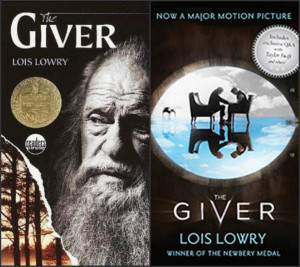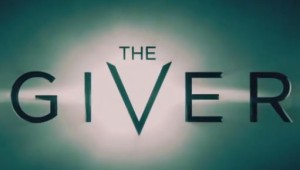
I’m going to say something shocking: The Giver might be the best movie based on a young adult book released in the past three years. Those who know me know that I’m a big fan of the Hunger Games Series and Divergent. So you must understand that I don’t say this lightly. Perhaps most interesting is the strong Christian bent there is in the story and how clear this is in the movie. Particularly to me as someone who ascribes to Wesleyan theology.
In Case You’re Not Familiar…
The Giver is a book released in 1993 that won several awards and was very popular. It was also – as all good books are – controversial among parents and educators. Some said that it was too dark in its themes. Others were concerned about the description of what they considered a “sexual awakening,” though I think they missed the whole point of the book if they think that’s what it actually was.
If you read the book, watch the movie, or just read my review and you find comparisons between this book and the Hunger Games or Divergent, know that this book predates those by more than 15 years. In some ways it was the prototypical YA novel based in a dystopian society. Though I’m glad they didn’t pull a ‘John Carter’ and alienate the fan base of those books by advertising that it was “before the Hunger Games.”
Bill Cosby actually attempted to produce the Giver in the mid 90’s and Jeff Bridges at that time wanted to be involved, though he wanted his father, Lloyd Bridges, to play the titular character. Due to the controversy and the usual Hollywood studio rigamarole it never came to fruition. Funny to think that if the book had been released today there would be a movie of it being released two years from now. 20 years ago it was possible for a good book to just be a good book.
Book vs. Movie: Cage Match
Comparing books and movies is like comparing apples with spark plugs. They have totally different purposes. When reading a book, entertainment value is often secondary to literary value, and the thoughtfulness of the piece takes precedence over how “fun” it is. While films snobs would bemoan it, the opposite is true of film. The artistic value is secondary to entertainment value. Simply put, books are a medium wherein people expect to think, while film is a medium wherein people expect to be entertained. More people are willing to pay to be entertained than they are willing to pay to think and thus movies make more money than books.
Despite all this, we know that the best books and movies are all going to be both fun and thoughtful. The Lord of the Rings, It’s a Wonderful Life, and almost all of the Pixar Films all have both of these traits. This movie is no exception, but that doesn’t mean it’s exactly like the book.
When directors, producers and screenwriters, make changes from a book to a film it’s not because they’re idiots trying to ruin your childhood, it’s just because they want to make money and they’re trying to optimize the work for that. So this is my warning for any purist who loved the novel upon which The Giver is based: don’t bother. The movie makes several huge changes to the story and shifts several other details that you may think are important. However, if you’re willing to say that perhaps the book was its own work, and that it, like every other great artwork, can stand being reinterpreted, then you can enjoy this movie.
The biggest single difference between the book and the movie is the simple fact that the third act of the story was almost totally fabricated for this movie. While there are other differences, this is the most glaring one as it makes the ending feel totally different, though it actually ends up much like the novel does. The second big difference – that has some people very upset – is that the characters are 18 instead of 12. If you’re wondering why this is, please see the first sentence of the previous paragraph. They did it because they thought it would make it more marketable. Children can’t go see movies on their own, but teens do. The movie would have to be PG-13 to accurately represent the book, and PG-13 doesn’t market to children. PG-13 is a desirable rating – just look at the top 10 highest grossing movies to date; almost all of them are PG-13. Honestly though, this has very little practical effect on the story and none that is negative. If the ages of the children are important to you then stick with the book. In fact, if that detail is really important to you, then don’t ever go see a book adapted to a movie because that’s the exact kind of detail that producers eat for breakfast.
Other differences include small details being altered that have effects on the story – Asher’s job assignment is different in the movie in order to set up conflict between he and Jonas later. Instead of being bordered by a river they’re on an enormous plateau surrounded by misty clouds on all sides. Jonas manages to convince Fiona to stop taking her medication so she begins to feel also. Even smaller details such as Jonas not using the word “apprehensive” to describe the way he feels about the ceremony. To someone who read the book they’d know that the entire first chapter Jonas spends the day toiling over what exact word to use. Then there’s the fact that instead of taking pills to suppress their emotions, they must take a computerized injection every day. Ultimately these changes are mostly good or neutral to the story. (Again, unless you’re a purist.)
Summary (here be spoilers)
The Giver is set in a dystopian future of our world. Everything seems ideal at first. There is no hunger, no war, no pain, and no poverty. The members of the community make jokes, enjoy their jobs, and live comfortable lives. As a part of this society’s peacefulness there is a heavy emphasis on “precision of language” a phrase that really means avoiding using words that are considered obsolete. (Similar to 1984) While people are friendly to each other and everything seems peaceful, somehow the world is cold, literally colorless, mechanistic and perfunctory. One of the important aspects of this is the daily injections (pills in the book) that make sure no one is capable of real emotions. They don’t feel emotional pain because they’re not capable of it. Think: Equilibrium.
People are organized into family units, though their parents are not their biological parents. In the book this is explained more clearly, but it is alluded to in the movie. One of the jobs in their society is “birth-mother” which is exactly what it sounds like. Families are assigned two children of different ages. When the children are old enough, they leave the home. When adults are too old to work, they are “released to elsewhere.” Release is mysterious process for the elderly, those who disobey the rules, or infants that do not meet the health requirements to be given to parents. Anyone can apply to be “released to elsewhere” from the community.
The film opens, like Divergent or the Hunger Games, with a ceremony. Jonas is a young man who is turning 18. This ceremony involves all the children of the community receiving commendations and new items representing their progress in the community. Jonas’ little sister is 9. She and all the other 9’s receive bikes; the method of transport in the community. They also honor the older members of the community who are going on to be released. Finally it’s time for the 18’s ceremony wherein they’re assigned their job in the community. Think: Sorting Hat meets Reaping meets Faction Choosing.
When Jonas isn’t assigned a job like the other kids, he’s 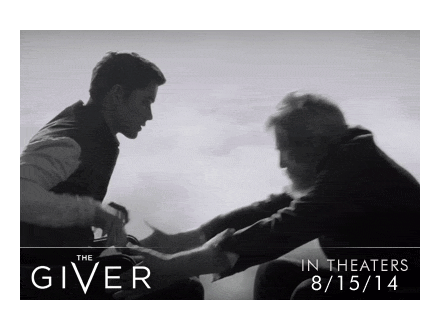 worried about what’s going to happen to him. He soon finds out that he’s been chosen for the once-in-a-generation job as the “Receiver of Memory.” The chief elder (played by Meryl Streep who has already won eight more Oscars just for selecting this role) explains that this position requires certain skills and strength. Sitting among the elders is an old, disheveled, bearded man who Jonas recognizes as Jeff Bridges, who was nominated for 17 Oscars for the work he did at lunch today, but unfortunately he only brought home one statuette. The mysterious bearded many turns out to be the current “Receiver of Memory.” Jonas shows up the next morning at the Receiver’s lonely house to start his training.
worried about what’s going to happen to him. He soon finds out that he’s been chosen for the once-in-a-generation job as the “Receiver of Memory.” The chief elder (played by Meryl Streep who has already won eight more Oscars just for selecting this role) explains that this position requires certain skills and strength. Sitting among the elders is an old, disheveled, bearded man who Jonas recognizes as Jeff Bridges, who was nominated for 17 Oscars for the work he did at lunch today, but unfortunately he only brought home one statuette. The mysterious bearded many turns out to be the current “Receiver of Memory.” Jonas shows up the next morning at the Receiver’s lonely house to start his training.
The old Receiver explains that his job is to contain all the memories of the way things were before the community was established. Having memories allows him to see color, hear music, and understand the depth and importance of emotions. Jonas can’t understand this, so the old man takes his hands and proceeds to transfer the memories into Jonas. The first several memories are all good (though in the book this is a little different.) Jonas points out that since there is only one Receiver of Memory, he doesn’t know what to call the old man and so he simply replied “The Giver.” Jonas begins to see color and stops taking his daily injections. Though for most of this time he doesn’t begin to question the structure of the community just yet.
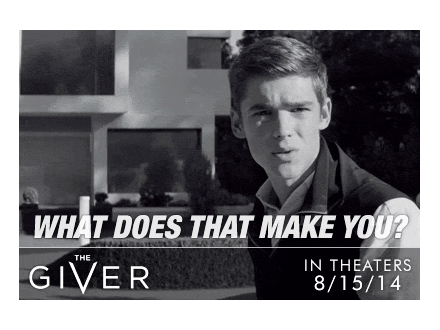
#titularLine
All during this time Jonas’ father, a “nurturer,” brings home a baby that has been labeled “uncertain.” Nurturers are in charge of caring for infants until they are assigned to their parents. This baby was labeled uncertain because he was underweight. Babies that don’t hit their target weight are released in favor of the children who are stronger. Jonas notices that the baby has the same birthmark on it’s wrist that he has. He had also seen the same birthmark on the Giver. This signifies that baby “Gabriel” has the same ability to “see beyond” as both Jonas and the Giver, Jonas supposed that one day baby Gabriel might replace him.
Jonas, becoming more reckless, convinces his friend Fiona, a pretty girl who’s hair he can now see is red, to stop taking her injections. This is a big departure from the book, but it allows Jonas some companionship when she arrives the next day confused and upset and she begins to realize that there is something very wrong with their community.
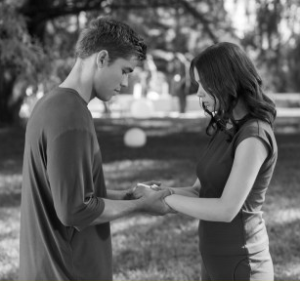
One day as Jonas enters the Giver’s house, the Giver is writhing in pain on the floor and as Jonas helps him up he accidentally receives the memory of war. This is upsetting and for a moment he doubts if he has the strength to carry on, but eventually he returns to find the Giver watching a hologram of he and a girl playing the piano together. The girl (a cameo role by Taylor Swift, who is only a little distracting) was the last one selected to be the receiver of memory. The Giver reveals that after receiving a memory regarding great loss that Rosemary applied for release.

Taylor is that you? I can’t tell without your massive amount of eyeliner.
Things come to a head when Jonas acts as if release is nothing to be feared, but the Giver shows him a hologram of what release truly is: euthanasia. Jonas watches in horror as his father gives a shot to a baby simply because it was the lighter of two twins. Twins are not allowed in their community. This is the turning point for Jonas and he realizes that they’ve been murdering babies, disposing of the old, and killing off any rule violator his whole life. Because of the injections they don’t even understand the pain and value of life that they should be taking in. Jonas’ outlook on his family changes drastically. 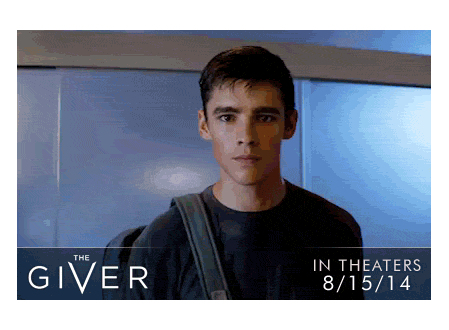
Jonas and the Giver, now in agreement that things must change, devise a plan that Jonas will leave the community and go until he reaches the “memory barrier.” This device is added for the movie and actually helps explain the ending A LOT. The memory barrier circles around the outer boarders of the community. It’s created by towers and makes it so that anyone inside the barrier cannot remember the world outside. By leaving with all the memories, Jonas will break the barrier, releasing all the memories so that everyone back in the community will suddenly remember everything.
Jonas returns to his family unit’s dwelling to discover that baby Gabriel has been returned to the nurturing center to be released as he hasn’t reached his target weight. Knowing now that release means death, Jonas breaks the rules and goes to rescue Gabriel, stopping at the Giver’s house to tell him that he’s leaving the community that night.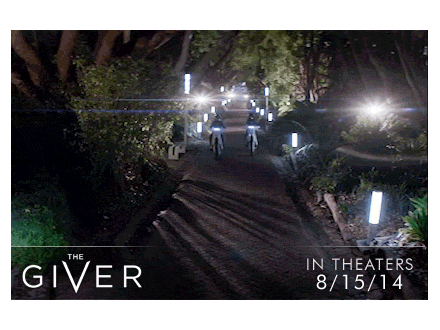
I’m not going to spoil the ending for you, especially if you have read the book, because it’s gives much more detail about what happens after Jonas leaves the community and that’s the fun part.
The Production
My biggest beef with the movie’s over all production was more with its writing than anything else. I thought that the adaptation was good story-wise, but it was weak in some of the dialogue. For a story that emphasizes precision of language I felt there were a few missed opportunities to lift exactly from the book the words that were used. I also thought that more could be done to illustrate how the society worked, making it clearer that by all appearances, everything is okay at the beginning of the story.
Perhaps the weakest point of the writing was the fact that they include narration. Narration is often added by producers after a movie is near completion (as in the case of the theatrical cut of Blade Runner), so it may not be their fault. Narration in movies is considered weak because it’s not taking advantage of the visual medium. Now you may recall that I didn’t mention this in my review of Divergent, which included narration just at the beginning. The difference is the efficiency of use. The narration in Divergent was only at the beginning to set up the world, and it was both telling and showing. The same is true of the narration at the start of Lord of the Rings: The Fellowship of The Ring.
In The Giver, narration is used as a crutch throughout the film to fall back on when the producers are worried that the audience might not get it. It weakens the over all impact because it gives you the impression that Jonas has already experienced everything that we’re seeing and as such, there’s no real danger to feel because we know the whole time that he’s survived.
However, this movie is amazing from a cinematic production standpoint. If it doesn’t get nods for both cinematography and visual effects then there is no justice.
The first quarter of the film is totally black and white. As Jonas awakens to the depth of emotions, memories and the human experience color begins to slowly creep in. This is actually one of the most interesting things that the book tries to describe. I say tries because color is inherently visual and no amount of words can explain colorlessness, colorfulness, or any gradation there between. Ultimately this is the single most impressive aspect of the production and while I can describe it to you all day long, as I’ve said it must be seen to really be appreciated.

The Cast
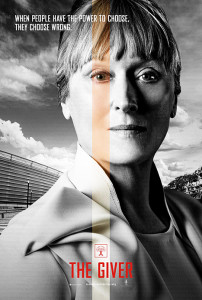
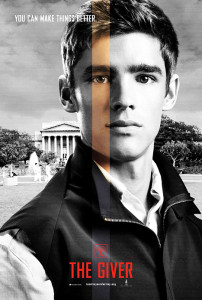
 The first people that will come to mind for anyone seeing the trailer will be Jeff and Meryl, but the main character is solid as well.
The first people that will come to mind for anyone seeing the trailer will be Jeff and Meryl, but the main character is solid as well.
If you’re upset with the fact that Jonas is older, I I think you can still enjoy Brenton Thwaites’ performance. He’s actually a solid actor and plays a likable and relatable character despite the fact that he’s in a strange, futuristic world that we shouldn’t be able to relate to at all. While he’s not going to be nominated for an Oscar, I think he brought a lot to the table. Any concerns I might’ve had about making Jonas older were quelled as soon as I saw him playing this role.
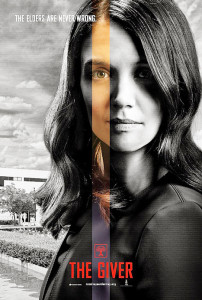
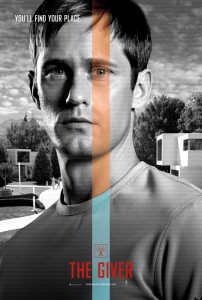
Beyond that we have an excellent cast of supporting characters. Katie Holmes, I know, has received mixed reactions for her role in Batman Begins. I didn’t hate her in that, so maybe I have Holmes-blindness, but I thought she did a good job as Jonas’ mother in this, perhaps though she’s best suited to play an emotionless, unfeeling shell of a human being. Hm. Not sure. But regardless she played her part well. Then there’s Alexander Skarsgård. Who you may know from nothing. That’s not a film title, you actually know him from nothing. You may say “didn’t I see him in?” No, not likely. Ok that isn’t fair, he was in Battleship and True Blood. Did you watch either of those? No? Okay. That’s what I thought. Anyway he’s good too as Jonas’ father. 

Next we have Cameron Monaghan as Asher, if there was a weak one in the bunch it’s probably him. I’m not sure if it was because of the dialogue that was written for him or if his performance was truly sub-par, but he wasn’t all he should’ve been for whatever reason.
Odeya Rush plays Fiona. I respect the casting director for not going with a bigger name for this role. While miss Rush has made a career out of playing creepy little girls, she hasn’t been tested in this kind of part. She did well in adding some feminine hart to the story that focuses on two dudes for most of the time.
And finally we have that little cameo from Taylor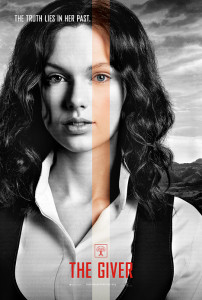 swift. Her role is pretty tiny really, and not at all jaw-dropping. The part of Rosemary is important to the story, but she doesn’t actually appear in person in the book, and the way they put her into the movie was such that anyone could’ve played the role equally effectively. I’m not getting at Taylor, she may be a great actress, but this part didn’t show any range to speak of, it seems odd to me that they would insert her into such a small role that just as easily could’ve been played by another small-name or no-name and probably just as effectively. However, it’s clear based on their marketing that the goal was to get teenage girls in to see this movie. Why else would such a small role get her own poster? So I guess what I’m saying is, you should go see this movie, but not because Taylor Swift is in it.
swift. Her role is pretty tiny really, and not at all jaw-dropping. The part of Rosemary is important to the story, but she doesn’t actually appear in person in the book, and the way they put her into the movie was such that anyone could’ve played the role equally effectively. I’m not getting at Taylor, she may be a great actress, but this part didn’t show any range to speak of, it seems odd to me that they would insert her into such a small role that just as easily could’ve been played by another small-name or no-name and probably just as effectively. However, it’s clear based on their marketing that the goal was to get teenage girls in to see this movie. Why else would such a small role get her own poster? So I guess what I’m saying is, you should go see this movie, but not because Taylor Swift is in it.
Christian Themes
The whole point of the book, to me as a Christian, is an explanation for the problem of pain. If you’re not familiar with it, the problem of pain or problem of evil (different problems, but two sides of the same coin) is the question of why, if God is loving and all-powerful, would He allow for such great pain to be possible. There are many good answers to this question that Christians have used to answer it logically, but ultimately the problem of pain is an emotional one that cannot be answered with logic.
The Giver seems to offer that if we were to find a way to get rid of pain we’d also have to get rid of love and ultimately get rid of choice. That’s when we realize that for great love and freedom to exist, the possibility of great pain has to exist also. When Meryl Streep’s character, the Chief Elder, assesses “when people choose, they choose wrong.” She is explaining why a society would come to a place where they would ultimately remove choice from the equation and remove one’s desire for anything but efficiency and preservation of continuity.
While pain is terrible, living a life without it means that we cannot tell right from wrong. It’s like C.S. Lewis says:
“Pain is God’s megaphone to a dying world”
– C.S. Lewis
We get an up-close look at a world without pain in The Giver and it’s terrifying. It results in the killing of innocents and loss of an understanding of the value of life.
The other obvious issue is abortion. If you’re wondering why this movie didn’t get good reviews, it had nothing to do with the acting or the production. This movie had a subtle, but somehow still very strong anti-abortion message woven into it. The idea that the only way to get rid of evil is really to get rid of our understanding of evil is entirely accurate and it results in our voluntary ignorance when we consider the controversies. Instead of trying to discern the truth, we do what is the most efficient thing for us, while ignoring the reality of killing children.
Final Thoughts
I don’t want to build this movie up too much. It isn’t prefect. It raises questions (why and how would a society that can’t see color bother having color-coded uniforms for workers?) You may find it cheesy in places. you may find it weird. You may just not get it. It may get reviewed out of the theater before you even get a chance to catch it. It may be a blip on the cultural radar, and likely will be less than a blip. But I will say that I believe that not only is this the best YA movie of recent years, it might be the best christian movie since the Voyage of the Dawntreader.
And oddly, though the reviewers on rotten tomatoes only gave it a 30%, somehow the users reviewed it at 70% so normal people without an agenda seem to like it a lot. I give it a 4 out of 5 stars and highly recommend catching it in theaters.
